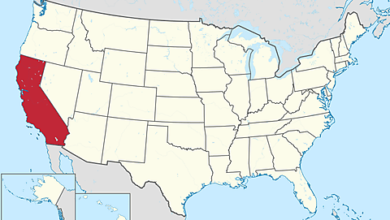Census Bureau Analysis Supports Cato’s MENA Analysis

Around the time that Cato published my estimates that the Middle Eastern or North African (MENA) population is around 3.8 million in 2021, the US Census Bureau found similar results from the 2020 enumeration that counted 3.5 million MENA people. Census’ numbers come from detailed responses to the 2020 Census race question, which allowed respondents to write‐in additional detail about their background (such as “Lebanese” or “Egyptian”) along with their race.
With the detailed race data from the 2020 Census enumeration available, we therefore have a direct source of data on the MENA population to evaluate the quality of Cato’s estimates of the MENA population, which were based on survey data from the American Community Survey (ACS). The recent Cato estimates hold up extremely well next to the Census estimates, but I want to explain some of the differences.
Using data from the Demographic and Housing Characteristics‑A (DHC‑A) data file, I compare the 2020 enumeration results with my data tabulated using the 2021 American Community Survey (ACS) from IPUMS. The DHC‑A file provides population data broken down by detailed age, sex, and race. The detailed breakdowns include MENA both “alone” and “alone or in any combination.” Since these two data points cover slightly different populations, there are a few caveats to note before I compare the Cato survey estimates with the enumeration.
The key distinction between the two measures is that they serve as upper and lower bounds for the MENA population. “MENA alone” measures the fewest number of people who identified as MENA in the enumeration and covers those who responded “White only” and wrote in a MENA background. Since respondents could select more than one race, a more comprehensive count is “MENA alone or in combination,” which adds individuals who reported a MENA background in addition to another race.
For my analyses, I used both birthplace and country of birth to identify the MENA population in the ACS. This means that my measure of the MENA population covers anyone in the ACS who reported a MENA background. Accordingly, this concept aligns more closely with the “MENA alone or in any combination” definition. I therefore opt to compare my survey‐based estimates with “MENA alone or in any combination” to match each definition as closely as possible. To compare the 2020 enumeration with the ACS estimates, I overlay the age and sex distributions from each dataset in the two following plots.
Figure 1 overlays the age distribution between my ACS‐based data and the 2020 enumeration results, capturing the share each age group makes up of the total MENA population. While the age distributions are visually similar, the survey‐based estimates from the 2021 ACS showed a slightly older MENA population when identified as MENA alone or in any combination.
Figure 2 breaks down the age distribution down further by sex. Notably, the ACS‐based estimates show that both men and women in the MENA population tend to be older than those counted in the 2020 enumeration. This is especially true for young men in their 30’s, who represent a larger share of the MENA population compared to the 2020 enumeration.
One remaining question is whether the two age distributions are statistically different. Running a rudimentary Kolmogorov‐Smirnov test, I find that there is no statistically significant difference between the MENA age distribution from the ACS compared to the 2020 enumeration (p = 0.78). Despite the 2020 showing a slightly younger MENA population, the difference isn’t significant when spread across age and sex.
Despite the slight differences in the age distribution, it’s comforting to see that the Cato survey‐based estimates are very close to the 2020 enumeration results. Since retiring the “long‐form” census, the ACS is the most comprehensive source of demographic and social information available. It’s therefore reassuring that the methods are at least sound regardless of whether the government should create such a new racial category. The high quality of Cato’s survey‐based estimates also likely confirms my general finding that MENA Americans are highly educated and have high incomes.
For those interested in more information and data, be sure to check out the recent Cato briefing paper, other Cato analyses of MENA and the proposed changes to race and ethnicity data collection, and the US Census Bureau’s analysis. All codes for this analysis are available on GitHub.





